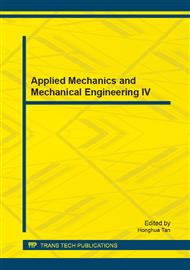p.144
p.149
p.153
p.159
p.164
p.173
p.177
p.183
p.189
The Application of Mobile P2P Communication Mechanism in Geological Disaster Monitoring
Abstract:
This paper presented a method and technology about how to transmit geological disaster data. According to analyzing the NAT devices working principle, the TCP connection was created to stabilize the tuple mapping with the help of public network server, white can realize a P2P communication mechanism to transmit geological disaster data to remote PC directly. After analyzing the deficiencies about TCP protocol, some algorithms were added in application layer to improve TCP protocol in order to improve the communication mechanisms stability. By a great number of tests and practicalities, the mechanism can guarantee the geological disaster datas real-time and reliability which has some practical value to geological disaster monitoring.
Info:
Periodical:
Pages:
164-169
Citation:
Online since:
October 2013
Authors:
Keywords:
Price:
Сopyright:
© 2014 Trans Tech Publications Ltd. All Rights Reserved
Share:
Citation:


